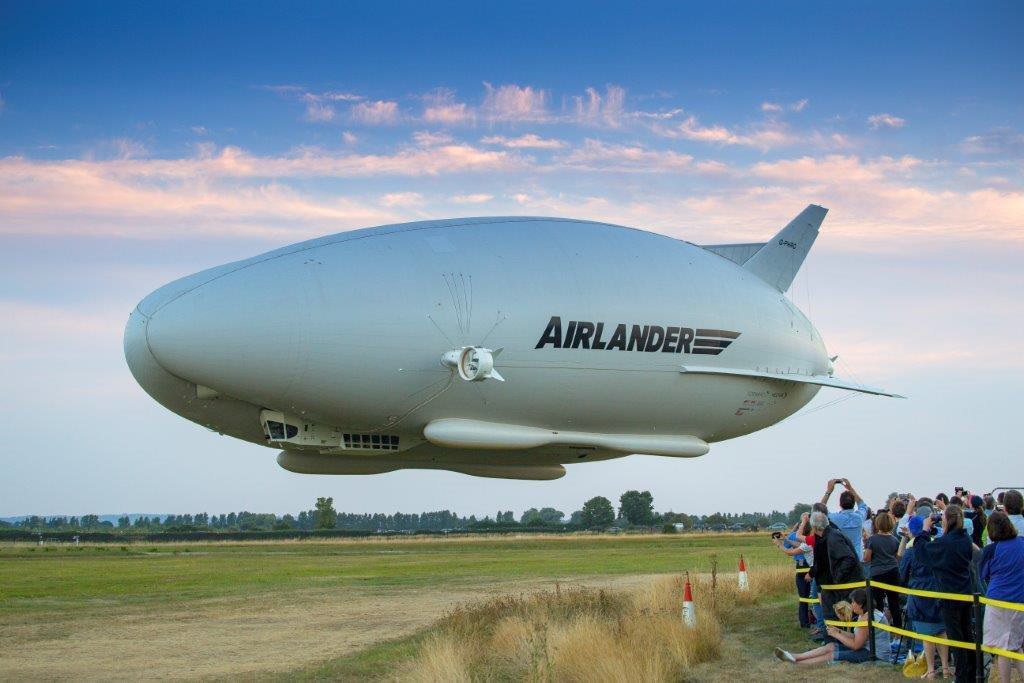Founded in 2007, Hybrid Air Vehicles is the company behind the innovative Airlander range of hybrid aircraft. They utilise new aerospace technology that combines the best of the characteristics of fixed wing aircraft and helicopters with lighter-than-air technology to create a new breed of hyper-efficient aircraft, with a significantly lower carbon footprint and operating cost than other forms of air transport.
Airlanders are low noise, low pollution, and are environmentally-friendly. They have ultra-long endurance, and a point-to-point cargo-carrying capacity. They can take off and land in a short distance from unprepared sites in desert, ice, water, or open field environments.
Envelope
Helium filled, laminated fabric construction hull. The hull’s aerodynamic shape, an elliptical cross-section allied to a cambered longitudinal shape, provides up to 40% of the vehicle’s lift. The internal diaphragms required to support this shape allow for a limited amount of compartmentalisation further enhancing the fail-safe nature of the vehicle. Multiple ballonets located fore and aft in each of the hulls provide pressure control.
Landing System
Profiled pneumatic tubes / skids on the underside of the two outer hulls provide for multi-surface ground operation including amphibious capability. On the production version skids are ‘sucked-in’ for a clean-in-flight profile.
Power Plant
4 x 325 hp, 4 litre V8 direct injection, turbocharged diesel engines. Two engines mounted forward on the hull and two on the stern of the hull for cruise operation. All four are configured with ducts with blown vanes to allow vectored thrust for take-off/landing/ground handling operation.
First Flight
Airlander 10 took off from the historic Cardington Airfield in Bedfordshire, England on 17th of August, after a short flight it landed before dark.
Photographers and plane spotters baked in the sun as they waited to see the aircraft, whose bulbous exterior has earned it the less-than-glamorous nickname "the flying bum", take off.
Crowds clapped and cheered as the craft soared above them during its first outing from the First World War hangar where it was revealed in March after undergoing hundreds of changes by Hybrid Air Vehicles (HAV) over two years.
First developed for the US government as a long-endurance surveillance aircraft, the British firm launched a campaign to return the craft to the sky after it fell foul of defence cutbacks.
HAV chief executive officer Stephen McGlennan said the team had been waiting for low winds for the launch but added the airship could "operate very happily" in 80 knots of wind.
Source: independent.co.uk, mirror.co.uk, dailymail.co.uk, hybridairvehicles.com
